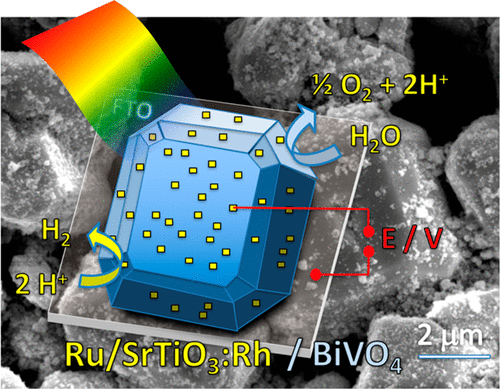Light Turns on Water Splitting Photocatalyst

In a recent publication (Melo Jr. and coworkers, Nano Lett., Article ASAP, http://pubs.acs.org/doi/abs/10.1021/acs.nanolett.7b04020) the Osterloh Lab used Surface Photovoltage Spectroscopy (SPS) to measure the photopotential across a Ru–SrTiO3:Rh/BiVO4 particle tandem photocatalyst for the first time. This catalyst enables the electrolysis of water into oxygen and hydrogen, a promising carbon neutral fuel, using only sunlight as energy input. According to SPS, a photovoltage of up to 2.45 V develops across the catalyst when it is illuminated with light of 2.20 eV (< 560 nm). Measuring the photopotential across particle catalysts is an important step towards the understanding of artificial photosynthesis with microheterogeneous particles.
